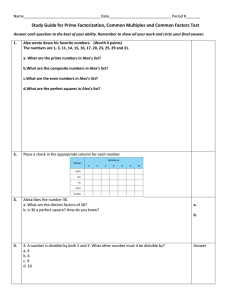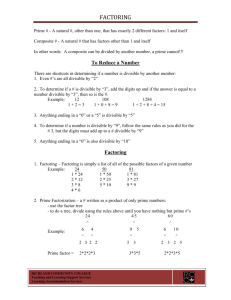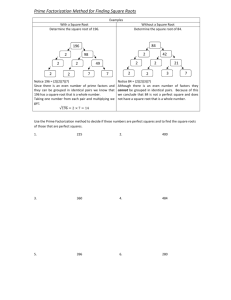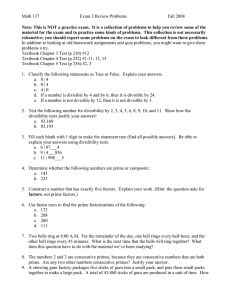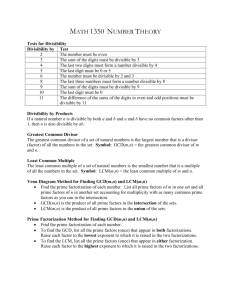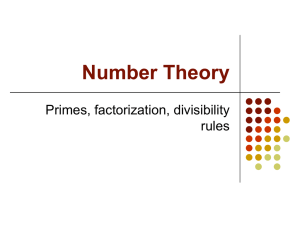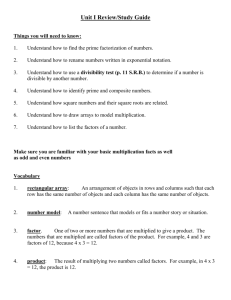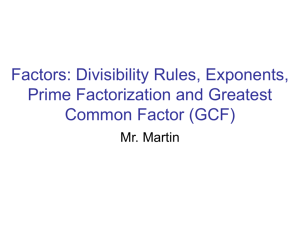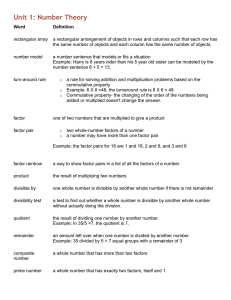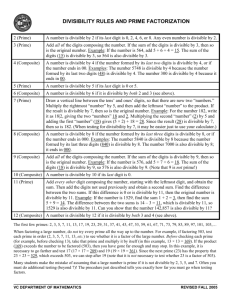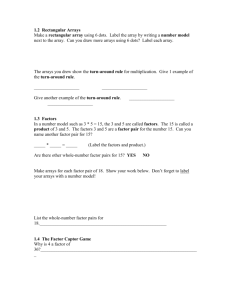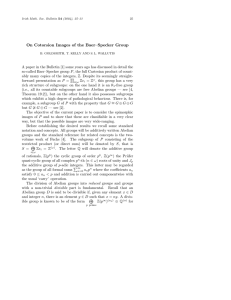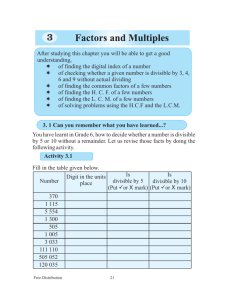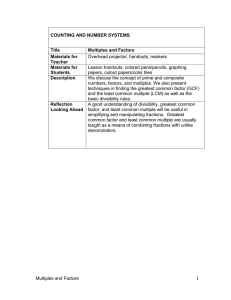NMAC05AED.pdf
advertisement
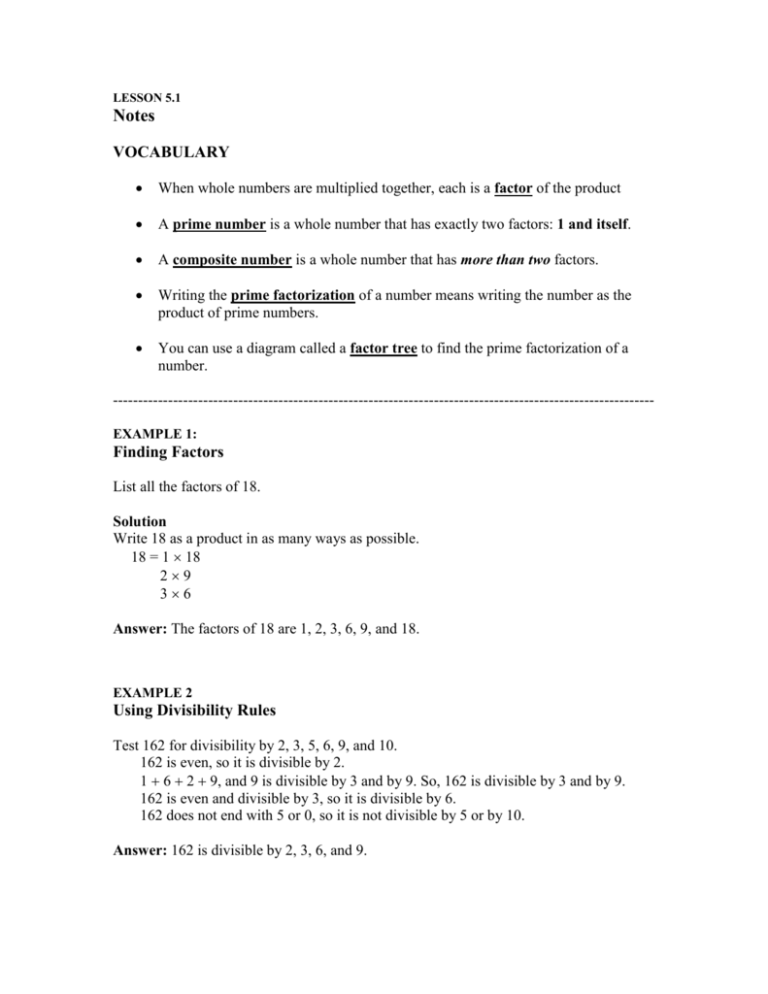
LESSON 5.1 Notes VOCABULARY When whole numbers are multiplied together, each is a factor of the product A prime number is a whole number that has exactly two factors: 1 and itself. A composite number is a whole number that has more than two factors. Writing the prime factorization of a number means writing the number as the product of prime numbers. You can use a diagram called a factor tree to find the prime factorization of a number. -----------------------------------------------------------------------------------------------------------EXAMPLE 1: Finding Factors List all the factors of 18. Solution Write 18 as a product in as many ways as possible. 18 = 1 18 29 36 Answer: The factors of 18 are 1, 2, 3, 6, 9, and 18. EXAMPLE 2 Using Divisibility Rules Test 162 for divisibility by 2, 3, 5, 6, 9, and 10. 162 is even, so it is divisible by 2. 1 6 2 9, and 9 is divisible by 3 and by 9. So, 162 is divisible by 3 and by 9. 162 is even and divisible by 3, so it is divisible by 6. 162 does not end with 5 or 0, so it is not divisible by 5 or by 10. Answer: 162 is divisible by 2, 3, 6, and 9. EXAMPLE 3 Creating a Factor Tree Create a factor tree for 54. 54 9 x 3x3 6 2x3 Start with ANY two factors of 54. Circle primes when you write them. When all you have left are prime numbers, you are done. 54 2 x 27 It will work with ANY two factors to start. 3x9 3x3 When you are done, you write the prime factorization of ONLY the circled primes. Put them in numerical order. So, 54 = 2 x 3 x 3 x 3 This is the prime factorization of 54. It’s also called a factor string.



